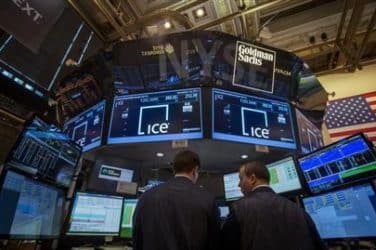
CME refers to cash-settled look-alike contracts as “parasitic.”
A furor has erupted within the commodities markets over position limits proposed by the Commodity Futures Trading Commission, which were adopted in an interim final rule in November.
The interim final rule governs spot-month position limits applicative to physical delivery derivatives and their cash-settled look-a-likes.
The rule would apply spot-month position limits to cash-settled contracts using the same methodology as applied to the physical Core Referenced Futures Contract, i.e., 25% of deliverable supply, other than the natural gas market, where the position limit for cash-settled contracts would be set at 125% of available supply.
CME has objected to the five-times limit in natural gas, arguing that by definition, the physically-delivered contract and its cash-settled lookalike are linked and arbitrage naturally occurs between the contracts.
“We can think of no reason why parasitic cash-settled contracts require or deserve a higher spot-month limit than the principal physical delivery price discovery contract on which they are based,” said CME CEO Craig Donohue.
CME Group and InterContinental Exchange have sparred over the conditional limits rule.
CME, in arguing that the conditional limit be decreased or eliminated, cites data that its says demonstrates that since the conditional limits were introduced in the natural gas market in Feb. 2010, trading volume has decreased in the physically-delivered Nymex natural gas futures contract (NG) in the critical 30-minute settlement period on the last trading day.
ICE, in response, said that CME’s analysis is materially flawed and that in the 17 months since the conditional limit provision went into effect, natural gas prices have been lower and less volatile than historical levels.
ICE cited data that it says refutes any suggestion that the existence of the conditional limited resulted in increased volume in the ICE Henry Hub Swap at the expense of volume in the Nymex NG contract curing the 30 minutes prior to contract expiration.
The CFTC says that the 125% spot-month limit for cash-settled contracts in natural gas is necessary to ensure that there is sufficient liquidity for hedging purposes.
The CME disputes that, arguing that the estimates of deliverable supply upon which the spot-month position limit is based are much lower than actual supply.
The deliverable supply estimates for natural gas haven’t been updated in 14 years, and haven’t been updated for crude oil in six years, noted CME.
Based on its own assessment of supply estimates in crude oil and natural gas, CME said it expects the deliverable supply estimates to “increase meaningfully.”
With updated deliverable supply estimates, a spot-month limit in linked markets that sets the limit at 25% of estimated deliverable supply for both the physical delivery contract and the cash-settled look-a-like is the most sound regulatory policy, according to CME.
A proposed rule issued by the CFTC in January 2011 set spot-month position limits at 25 percent of deliverable supply for a given commodity, with a conditional spot-month limit of five times that amount for entities with positions “exclusively” in cash-settled contracts.
But in its interim final rule, the CFTC dropped the requirement that positions be exclusively in cash-settled contracts.
Spot-month position limits will apply separately to physically-settled and cash-settled contracts: a trader may hold positions during the spot-month in physically-settled contracts in an amount up to the spot-month limit (which is set at 25% of deliverable supply), and may separately hold positions in cash-settled contracts up to that limit.





